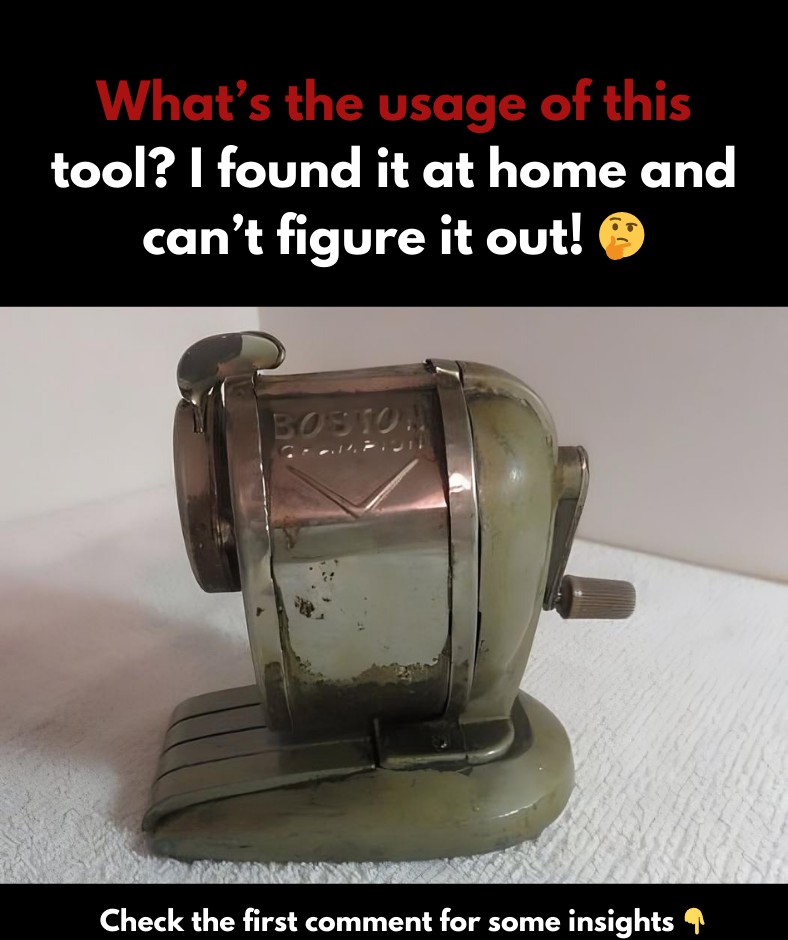Do you remember the sound of a metal mechanical pencil sharpener grinding pencils to a fine point in your classroom? That familiar clank when adjusting the settings, followed by the smooth hum as wood and lead met their fate. For many of us, this was a daily ritual in elementary school. One such sharpener that holds a special place in our hearts is the Boston Pencil Sharpener—a staple in American classrooms for decades. Let’s take a trip down memory lane and explore the history and enduring charm of this iconic tool.

The Classroom Ritual: A Daily Walk to the Sharpener
If you attended school during the 80s or 90s, you likely remember making that twice-daily trek to the classroom pencil sharpener. The Boston sharpener was usually mounted securely on a wall or desk, often near the door. It was a reliable companion in our school days. You’d pick the right slot for your pencil (though most of us always used the standard size), crank the handle a few times, and return to your seat with a freshly sharpened point.
This routine wasn’t just about getting a sharpened pencil. It was a shared experience—a chance for a small break from the classroom monotony, a moment to watch the pencil shavings accumulate in the sharpener’s compartment. Occasionally, someone would be tasked with emptying the shavings into the trash, completing the satisfying cycle of this simple classroom ritual.
Finding a Piece of History at Goodwill
Fast forward a few decades, and that once-ubiquitous classroom tool has become a rare find. So imagine my excitement when I stumbled across a KS-model Boston pencil sharpener at my local Goodwill. For just three dollars, I couldn’t resist the nostalgia it brought back. This particular model had eight pencil hole slots and two holes at the bottom for mounting—classic features of the Boston brand.
What struck me most was how well-preserved the sharpener was. It wasn’t just a tool; it was a piece of history. A tool that had once been a classroom mainstay now sat in a thrift store, waiting for someone to appreciate it again. I picked it up not because I needed it, but because it symbolized a simpler time—a time before electric sharpeners and mechanical pencils dominated the classroom.
The Boston Pencil Sharpener Company: A Legacy of Innovation
The Boston Pencil Sharpener Company was founded in 1899, quickly gaining a reputation for high-quality, reliable products. In 1913, they introduced the Boston Pencil Pointer, which sold for around $6. Back then, sharpening pencils often involved using a knife, which was wasteful and labor-intensive. The Boston Pencil Pointer revolutionized pencil sharpening, providing a more efficient and less wasteful solution.
As classrooms became more standardized in the 20th century, Boston sharpeners—like the KS model—became a common fixture. These hand-cranked sharpeners used a planetary mechanism that allowed for a smooth, even sharpening experience. Unlike the noisy, often unreliable electric sharpeners that would come later, Boston sharpeners were quiet, durable, and made to last.
A Classroom Icon: The Boston KS Model
For many of us, the Boston KS model was the go-to classroom sharpener. Mounted to a wall or desk, it was always there, ready when we needed it. Its sturdy metal construction could withstand years of use by hundreds of students, day in and day out. While it offered eight different pencil hole sizes, most of us just used the standard slot.
The special thing about the KS model wasn’t just its functionality—it was its reliability. You knew that no matter how dull your pencil was, the Boston sharpener would do the job. And because it was manually operated, it offered a tactile experience that electric sharpeners simply couldn’t match. Every turn of the handle brought you closer to that perfectly sharpened point, giving a small but satisfying sense of accomplishment.
The Transition to Mechanical Pencils and Electric Sharpeners
By the time I reached middle school in the 2000s, things had begun to change. Mechanical pencils gained popularity, and many classrooms replaced their trusty Boston sharpeners with electric models. While these new sharpeners were faster, they had their own set of issues—they were loud, disruptive, and prone to breaking. The quiet, steady rhythm of the Boston sharpener was replaced by the grinding whirr of an overworked electric motor.
Even though electric sharpeners became the norm, many of us missed the simplicity of the old Boston models. There was something deeply satisfying about manually sharpening a pencil—a small ritual that was part of the rhythm of school life.
The Evolution of the Boston Sharpener: From Hunt to X-ACTO
In 1925, the Boston Pencil Sharpener Company was acquired by Hunt Manufacturing, which continued producing the beloved sharpeners. Eventually, X-ACTO bought the Boston sharpener line, and today, X-ACTO still produces metal, hand-cranked Boston-style sharpeners.
However, many collectors argue that the charm and quality of the original Boston models have been lost. Modern X-ACTO versions are made in China, and some enthusiasts believe that the mechanisms lack the durability and craftsmanship of the original U.S.-made sharpeners. Despite these changes, the legacy of the Boston sharpener endures, even if the modern versions don’t quite live up to the originals.
Conclusion: Why the Boston Pencil Sharpener Still Holds a Special Place in Our Hearts
The Boston Pencil Sharpener may seem like a relic from a bygone era, but for those of us who grew up with it, it represents much more than just a tool. It’s a symbol of a simpler time—a time when classroom tools were built to last and when the act of sharpening a pencil was a small but meaningful ritual in the school day.
While mechanical pencils and electric sharpeners have taken over, the hand-cranked Boston sharpener still holds a special charm. Whether you find one at a thrift store or still have one mounted somewhere at home, these sharpeners are a reminder of those quiet, everyday moments that made up our school years. The next time you see one, give it a spin—you might just find yourself transported back to a time when a well-sharpened pencil was all you needed to tackle the day’s lessons.





